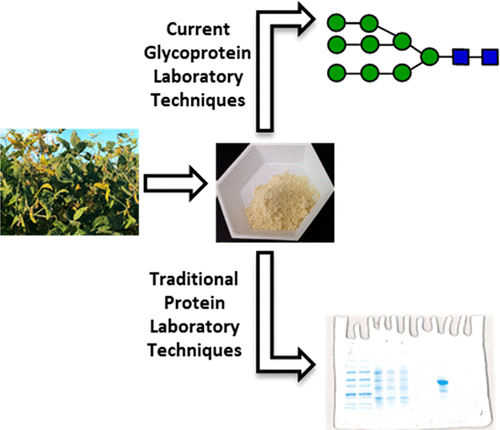当前位置:
X-MOL 学术
›
J. Chem. Educ.
›
论文详情
Our official English website, www.x-mol.net, welcomes your
feedback! (Note: you will need to create a separate account there.)
Protein N-Glycans: Incorporating Glycochemistry into the Undergraduate Laboratory Curriculum
Journal of Chemical Education ( IF 2.5 ) Pub Date : 2018-10-05 00:00:00 , DOI: 10.1021/acs.jchemed.8b00539 Victoria R. Kohout 1 , Zachary J. Wooke 1 , Andrew G. McKee 1 , Megan C. Thielges 1 , Jill K. Robinson 1 , Nicola L. B. Pohl 1
Journal of Chemical Education ( IF 2.5 ) Pub Date : 2018-10-05 00:00:00 , DOI: 10.1021/acs.jchemed.8b00539 Victoria R. Kohout 1 , Zachary J. Wooke 1 , Andrew G. McKee 1 , Megan C. Thielges 1 , Jill K. Robinson 1 , Nicola L. B. Pohl 1
Affiliation

|
Glycoscience continues to be an underrepresented topic in current undergraduate-biochemistry-laboratory curricula. Of the educational laboratories present in this subject area, few introduce students to cutting-edge methods and techniques related to carbohydrates. A multiweek series of experiments is described that highlights a recently published bleach-mediated-carbohydrate-cleavage protocol in the context of the isolation and identification of the soybean glycoprotein, β-conglycinin. Two different levels of undergraduate biochemistry courses (a first-year introductory course and an upper-level bioanalytical course) completed the experimental set. Although the same sequence of experiments took place for both levels, the teaching approaches to the material varied. The introductory course used an inquiry-type learning approach, whereas the upper-level students were taught with a guided-inquiry approach. Students in both courses were able to successfully isolate glycosylated β-conglycinin from inexpensive soy flour and then analyze the protein with SDS-PAGE and mass spectrometry. Once β-conglycinin was isolated, students were able to effectively adapt a recently published bleach-mediated-carbohydrate-cleavage protocol on this previously untested glycoprotein and quantitate the carbohydrate content with a colorimetric phenol–sulfuric acid assay. The effective execution of this biochemistry-laboratory series demonstrates an alternative undergraduate-laboratory curriculum that introduces students to traditional glycoscience and protein methods along with more cutting-edge techniques in these areas.
中文翻译:

蛋白质N-聚糖:将糖化学纳入本科实验课程
在当前的生物化学实验室课程中,糖科学仍然是代表性不足的话题。在该学科领域中存在的教育实验室中,很少有人向学生介绍与碳水化合物有关的尖端方法和技术。描述了一个为期数周的系列实验,这些实验着重于大豆糖蛋白β-伴大豆球蛋白的分离和鉴定背景下,最近发表的漂白剂介导的碳水化合物裂解方案。实验设置包括两个不同级别的本科生化学课程(一年级入门课程和一个高级生物分析课程)。尽管在两个级别上都进行了相同的实验序列,但是该材料的教学方法却有所不同。入门课程采用探究式学习方法,而高年级学生则采用引导式探究式方法进行教学。这两门课程的学生都能够从廉价的大豆粉中成功分离出糖基化的β-伴大豆球蛋白,然后通过SDS-PAGE和质谱分析蛋白质。一旦分离出β-伴大豆球蛋白,学生就可以有效地适应最近发布的漂白剂介导的碳水化合物裂解方案,以适应这种先前未经测试的糖蛋白,并通过比色酚-硫酸测定法对碳水化合物含量进行定量。这个生物化学实验室系列的有效实施展示了另一种本科实验室课程,向学生介绍了传统的糖科学和蛋白质方法以及这些领域中的更多前沿技术。这两门课程的学生都能够从廉价的大豆粉中成功分离出糖基化的β-伴大豆球蛋白,然后通过SDS-PAGE和质谱分析该蛋白质。一旦分离出β-伴大豆球蛋白,学生就可以有效地适应最近发布的漂白剂介导的碳水化合物裂解方案,以适应这种先前未经测试的糖蛋白,并通过比色酚-硫酸测定法对碳水化合物含量进行定量。这个生物化学实验室系列的有效实施展示了另一种本科实验室课程,向学生介绍了传统的糖科学和蛋白质方法以及这些领域中的更多前沿技术。这两门课程的学生都能够从廉价的大豆粉中成功分离出糖基化的β-伴大豆球蛋白,然后通过SDS-PAGE和质谱分析该蛋白质。一旦分离出β-伴大豆球蛋白,学生就可以有效地适应最近发布的漂白剂介导的碳水化合物裂解方案,以适应这种先前未经测试的糖蛋白,并通过比色酚-硫酸测定法对碳水化合物含量进行定量。这个生物化学实验室系列的有效实施展示了另一种本科实验室课程,向学生介绍了传统的糖科学和蛋白质方法以及这些领域中的更多前沿技术。
更新日期:2018-10-05
中文翻译:

蛋白质N-聚糖:将糖化学纳入本科实验课程
在当前的生物化学实验室课程中,糖科学仍然是代表性不足的话题。在该学科领域中存在的教育实验室中,很少有人向学生介绍与碳水化合物有关的尖端方法和技术。描述了一个为期数周的系列实验,这些实验着重于大豆糖蛋白β-伴大豆球蛋白的分离和鉴定背景下,最近发表的漂白剂介导的碳水化合物裂解方案。实验设置包括两个不同级别的本科生化学课程(一年级入门课程和一个高级生物分析课程)。尽管在两个级别上都进行了相同的实验序列,但是该材料的教学方法却有所不同。入门课程采用探究式学习方法,而高年级学生则采用引导式探究式方法进行教学。这两门课程的学生都能够从廉价的大豆粉中成功分离出糖基化的β-伴大豆球蛋白,然后通过SDS-PAGE和质谱分析蛋白质。一旦分离出β-伴大豆球蛋白,学生就可以有效地适应最近发布的漂白剂介导的碳水化合物裂解方案,以适应这种先前未经测试的糖蛋白,并通过比色酚-硫酸测定法对碳水化合物含量进行定量。这个生物化学实验室系列的有效实施展示了另一种本科实验室课程,向学生介绍了传统的糖科学和蛋白质方法以及这些领域中的更多前沿技术。这两门课程的学生都能够从廉价的大豆粉中成功分离出糖基化的β-伴大豆球蛋白,然后通过SDS-PAGE和质谱分析该蛋白质。一旦分离出β-伴大豆球蛋白,学生就可以有效地适应最近发布的漂白剂介导的碳水化合物裂解方案,以适应这种先前未经测试的糖蛋白,并通过比色酚-硫酸测定法对碳水化合物含量进行定量。这个生物化学实验室系列的有效实施展示了另一种本科实验室课程,向学生介绍了传统的糖科学和蛋白质方法以及这些领域中的更多前沿技术。这两门课程的学生都能够从廉价的大豆粉中成功分离出糖基化的β-伴大豆球蛋白,然后通过SDS-PAGE和质谱分析该蛋白质。一旦分离出β-伴大豆球蛋白,学生就可以有效地适应最近发布的漂白剂介导的碳水化合物裂解方案,以适应这种先前未经测试的糖蛋白,并通过比色酚-硫酸测定法对碳水化合物含量进行定量。这个生物化学实验室系列的有效实施展示了另一种本科实验室课程,向学生介绍了传统的糖科学和蛋白质方法以及这些领域中的更多前沿技术。











































 京公网安备 11010802027423号
京公网安备 11010802027423号